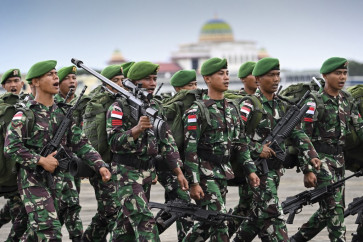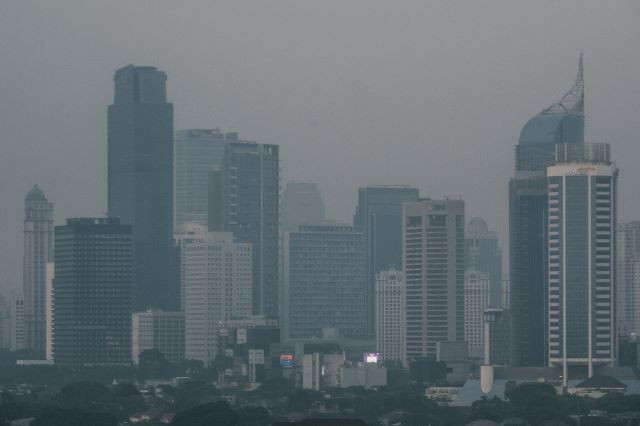Popular Reads
Top Results
Can't find what you're looking for?
View all search resultsPopular Reads
Top Results
Can't find what you're looking for?
View all search resultsA tale of two megalopoli: Jakarta vs New Delhi
Jakarta and New Delhi are two large and burgeoning metropolitan areas that are similar in many respects and are struggling to tackle challenges that are not all that different
Change text size
Gift Premium Articles
to Anyone

J
akarta and New Delhi are two large and burgeoning metropolitan areas that are similar in many respects and are struggling to tackle challenges that are not all that different. But their approaches, the level of selected infrastructure and the quality of planning and development, and their successes and failures offer a contrasting study in managing metropoli in developing countries like Indonesia and India.
While Jakarta proper’s population is stable at about 10 million, its surrounding suburbs of Bogor, Depok, Tangerang and Bekasi have mushroomed to about 18 million, making the total population of Jabodetabek (Greater Jakarta area) close to 28 million by 2017.
Similarly, New Delhi population is stable at only eight million, the metropolitan population in the surrounding area and nearby states of Haryana and Utter Pradesh are also fast-growing at about 15 million, making the New Delhi Metropolitan Area’s total population estimated at around 23 million at the present time. Based on Wikipedia, Jakarta is the third largest metropolitan area after Tokyo and Shanghai, and New Delhi is the ninth in the world.
New Delhi’s big achievement in transportation is that it already has an elaborate Metro (underground railway) system operating for nearly 20 years.
It is efficient, air conditioned and clean, and goes a long way toward improving metropolitan transportation for the region. But traffic problems remain in New Delhi, and an even/odd system for rotating cars is being considered.
In Jakarta an equivalent “MRT” system is still under construction, and traffic jams are notorious. Motorcycles outnumber cars by at least five to one while there are relatively few motor-cycles in New Delhi. Jakarta’s “busway” is a poor substitute for a bonafide metro system.
____________________
Efforts to implement metropolitan planning have been hampered by decentralization.
New Delhi also fares better than Jakarta when it comes to public parks and open space. An estimated 30 percent of land in the metropolitan area is devoted to public parks, including land surrounding the many monuments, tombs and gardens.
Only about 10 percent of Jakarta’s area is allocated to open space, and even this is being encroached on through illegal building. The area devoted to open space in the suburbs is not much better.
Jakarta’s infrastructure however is superior to New Delhi’s. Air pollution in New Delhi is one of the worst in Asia. In fact it is so bad that officials plan to limit car use for two weeks. Existence of major power plants is one of the primary causes of such air pollution.
Another area in which Jakarta fares better is on housing for the poor. The Kampung Improvement Program has been successful in providing local facilities (clean water, sanitation, drainage, local roads and footpaths, etc.) and supporting better housing.
New Delhi’s equivalent program for “bustees” is also upgrading slums there, but funds are insufficient. New Delhi also has a program of housing and improved facilities for so-called urban villages, high density areas initially designed to accommodate refugees from Pakistan at the time of partition.
While the system of land ownership is through private rights in Jakarta, it is more in the public domain (socialist) in Delhi. This arrangement in Jakarta puts the poor at a disadvantage unless they have bona fide private ownership rights.
Metropolitan New Delhi represents an intricate tapestry with well over a thousand years of history; the “New” was only added to Delhi within the past century. Many dynasties have ruled over the city throughout the centuries. Early in the 20th century, the British colonialists moved India’s capital from Calcutta to New Delhi which continued as the capital after independence in 1947.
The overall quality of urban planning has been relatively high there. During both the British colonial period and independence, planning has been influenced by the Garden City Movement.
Recently New Delhi has been designated as a UNESCO World Heritage site. Currently there is a 20-year master plan to guide development of the metropolitan area.
Jakarta’s history is much briefer, going back only 400 years under the Dutch when it was named Batavia. The urban planning tradition in Jakarta has been far more modest, although some signs of good Dutch local planning can be seen from the early years and recent planning of Kebayoran Baru by the government since independence in 1945.
Efforts to implement metropolitan planning have been hampered by decentralization giving more authority to local governments.
Comparing the two metropolitan areas overall, New Delhi has fared better.
The well-run metro system, together with the excellent quality and history of urban planning, have both combined to give a real edge to the New Delhi Metropolitan Area. However, both of these cities have very different paths and traditions, and I wish their leaders and planners well in coping with the challenges which each urban area presents.
______________________________
The writer has 30 years of professional experience in Indonesia and four years in India working with the city authorities in addressing urban problems.









